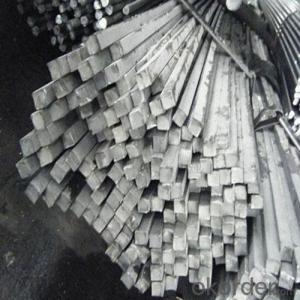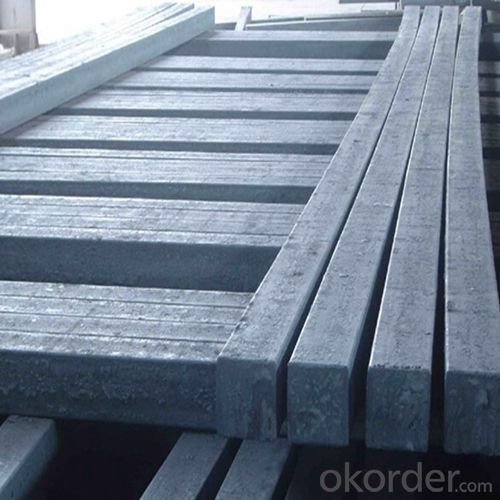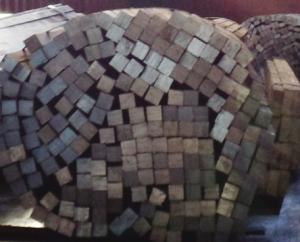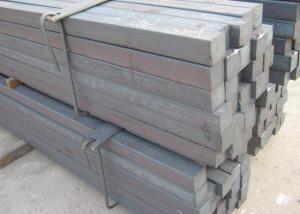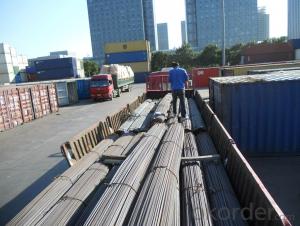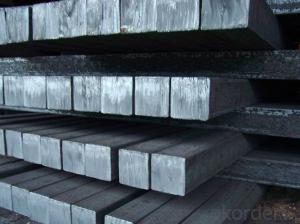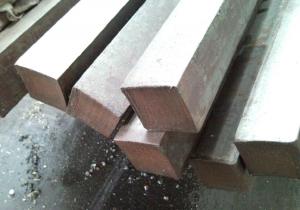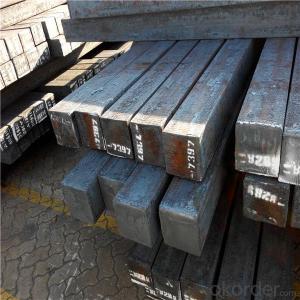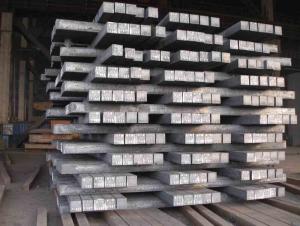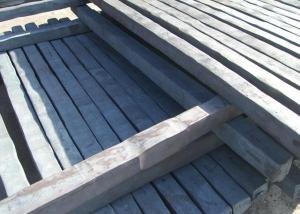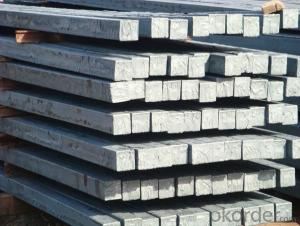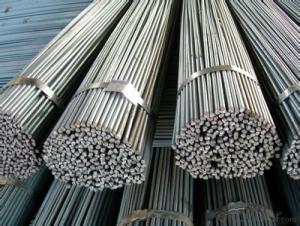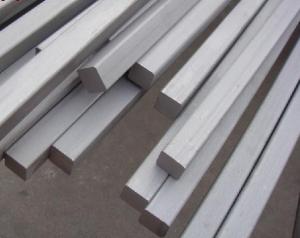Steel Billet in Square Straight Form Big Sizes High Quality
- Loading Port:
- Shanghai
- Payment Terms:
- TT OR LC
- Min Order Qty:
- 50 m.t.
- Supply Capability:
- 10000 m.t./month
OKorder Service Pledge
OKorder Financial Service
You Might Also Like
Specification
Steel Billet in Square Straight Form Big Sizes
Structure:
Steel billet in square straight form big sizes is a bar with square shaped cross-section. It is special case of equal sides. Before steel products are sold on the market, the steel must first be processed into more functional pieces. Raw steel cannot be of use while in its pure form, thus it has to be cast into shape. The freshly made steel, steel billet in square straight form big sizes is still in the form of a metal bar or rectangle. Small sizes of steel billet in square straight form big sizes are used in ship building.
Main Features:
• Grade: Q235
• Type: Mild carbon steel
• A quadrilateral with four equal sides and four right angles.
• Vibration: The stiffness and mass are chosen to prevent unacceptable vibrations, particularly in settings sensitive to vibrations, such as offices and libraries.
• Local yield: Caused by concentrated loads, such as at the beam's point of support.
Specification:
Mechanical Properties | Grade | Steel diameter(mm) | |||
≤16 | 16~40 | 40~60 | 60~100 | ||
Yield Point Δs/MPa | Q195 | ≥195 | ≥185 | - | - |
Q235 | 235 | 225 | 215 | 205 | |
Tensile Strength | Q195 | 315~390 | |||
Q235 | 375~500 | ||||
Elongation δ5% | Q195 | ≥33 | ≥32 | - | - |
Q235 | 26 | 25 | 24 | 23 | |
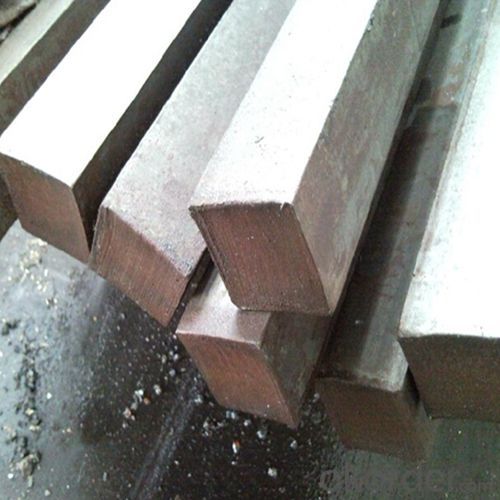
- Q: How do you use a steel square to lay out a parallelogram?
- To lay out a parallelogram using a steel square, follow these steps: 1. Determine the desired measurements for the parallelogram, such as side lengths and angles. 2. Place the steel square on a flat surface, ensuring proper alignment. 3. Use one edge of the square as a reference line and mark the starting point for the first side of the parallelogram on the material. 4. Align the reference line of the square with the marked point and firmly hold it in place. 5. Extend a straight line along the other edge of the square using a pencil or scribing tool, making it the desired length for the first side of the parallelogram. 6. Rotate the square while keeping the reference line aligned with the previously drawn line. 7. Mark the starting point for the second side of the parallelogram on the material. 8. Align the reference line with the marked point and draw a straight line along the other edge of the square to create the second side. 9. Finally, connect the endpoints of both sides with straight lines to form the remaining two sides of the parallelogram. By utilizing a steel square as a guide, you can ensure the accuracy and correct angles when laying out a parallelogram. Remember to verify your measurements and maintain proper alignment of the square throughout the process to achieve the desired shape.
- Q: Can a steel square be used for laying out a garden bed?
- Yes, a steel square can be used for laying out a garden bed. Steel squares are commonly used in carpentry and construction for measuring and marking right angles. They can be helpful for ensuring the corners of the garden bed are square and straight, providing a precise layout for planting or building raised beds.
- Q: How do you use a steel square to determine the angle of a profile cut?
- To use a steel square to determine the angle of a profile cut, you would place the square against the edge of the profile and align one of its sides with the reference line or edge. Then, you can read the angle measurement directly from the square's scale or use the square's pivot point to mark the desired angle on the profile for accurate cutting.
- Q: What is the purpose of a steel square?
- The purpose of a steel square is to provide a versatile and accurate measuring tool for various carpentry and woodworking tasks. It helps in measuring and marking right angles, laying out angles, and determining lengths and widths of materials.
- Q: How to combine the paint and galvanized steel
- No, as long as you choose the special galvanized steel pipe paint, mcGZ type is ok!
- Q: What are some common uses for a steel square in picture framing?
- The steel square, also referred to as a framing square or carpenter's square, serves as a versatile tool in the realm of picture framing. Its applications encompass a range of functions, including: 1. Measurement and marking: With precise measurements etched onto its surface, the steel square enables framers to accurately measure and mark the dimensions of picture frames. This proves particularly beneficial in guaranteeing the squareness of the frame and the alignment of its corners. 2. Angle verification: Boasting a 90-degree angle, the steel square proves instrumental in assessing the squareness of corners and ensuring proper frame alignment. Framers can position the square against the frame's corners to verify if they possess perfect squareness or necessitate adjustments. 3. Miter cutting: When crafting mitered corners for picture frames, the steel square can be employed to delineate and guide the cuts. By placing the square against the frame's edge, framers can draw a straight cutting line at the desired angle, thereby ensuring precise and accurate mitered corners. 4. Center determination: Frequently, framers must pinpoint the center point of a frame to ensure optimal placement of artwork or mounting hardware. The steel square can facilitate this process by marking the center through diagonal alignment of the square's edges across the frame, resulting in an intersection at the center point. 5. Mat board alignment: Mat boards serve as a common component in picture framing, enhancing the aesthetic and safeguarding the artwork. The steel square can assist in aligning the mat boards by positioning the square against the edges, guaranteeing their perpendicularity to one another. 6. Hardware alignment: The installation of various hardware components, such as D-rings, wire, or hooks, often proves necessary for hanging picture frames. The steel square can ensure the proper alignment and even spacing of these hardware pieces, culminating in a balanced and well-hung frame. All in all, the steel square constitutes an invaluable tool for picture framers, facilitating precise measurements, square corners, accurate cuts, and proper alignment of frames and mat boards.
- Q: Can a steel square be used for measuring the depth of a pond?
- No, a steel square cannot be used for measuring the depth of a pond. A steel square is a tool typically used in carpentry and construction for measuring angles and ensuring accuracy in right angles. It does not have the necessary features or design to accurately measure the depth of a pond. To measure the depth of a pond, specialized equipment such as a depth sounder, sonar, or a measuring tape specifically designed for water depths would be more appropriate.
- Q: Can a steel square be used for gazebo post layout and installation?
- Yes, a steel square can be used for gazebo post layout and installation. A steel square, also known as a framing square or a carpenter's square, is a versatile tool commonly used in construction and woodworking. It consists of a long blade and a shorter tongue that meet at a 90-degree angle, allowing for accurate measurements and layout. When it comes to gazebo post layout and installation, a steel square can be a valuable tool. It can assist in determining the correct angles and measurements for positioning the posts, ensuring that they are level and aligned properly. To use a steel square for gazebo post layout, you can use it to mark out the corners and angles where the posts should be placed. By aligning the blade or the tongue of the square with the edges of the gazebo base or the desired position of the posts, you can ensure accurate measurements and angles. During installation, a steel square can also be handy for checking that the posts are plumb and level. By placing the square against the sides of the posts, you can verify if they are perfectly vertical or if adjustments need to be made. In summary, a steel square can certainly be used for gazebo post layout and installation. Its versatility and accuracy make it a useful tool for ensuring that the posts are positioned correctly and are level.
- Q: How do you use a steel square to determine the angle of a cut?
- To use a steel square to determine the angle of a cut, you would place the square against the material being cut, aligning one edge of the square with the edge of the material. Then, you can read the angle measurement indicated on the square's scale or protractor. This will give you the precise angle for making the cut.
- Q: Can a steel square be used for checking the squareness of a jigsaw blade?
- No, a steel square cannot be used for checking the squareness of a jigsaw blade. A jigsaw blade needs to be checked for squareness using specialized tools such as a square or a squareness gauge designed specifically for jigsaw blades.
Send your message to us
Steel Billet in Square Straight Form Big Sizes High Quality
- Loading Port:
- Shanghai
- Payment Terms:
- TT OR LC
- Min Order Qty:
- 50 m.t.
- Supply Capability:
- 10000 m.t./month
OKorder Service Pledge
OKorder Financial Service
Similar products
Hot products
Hot Searches
Related keywords
